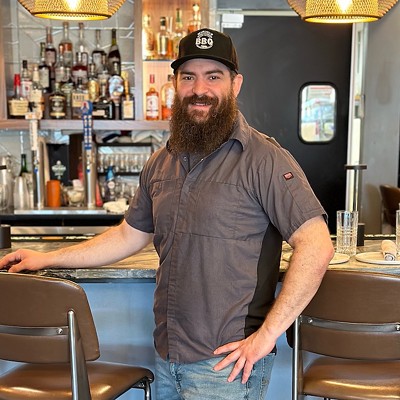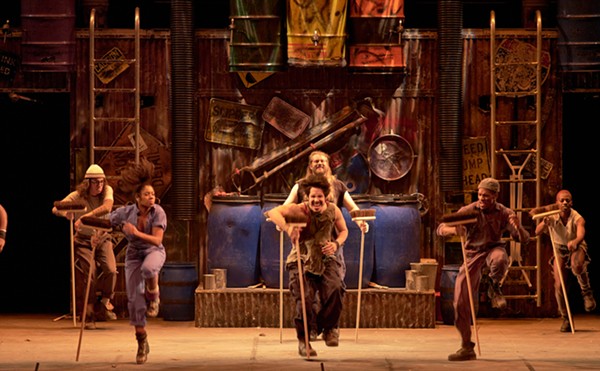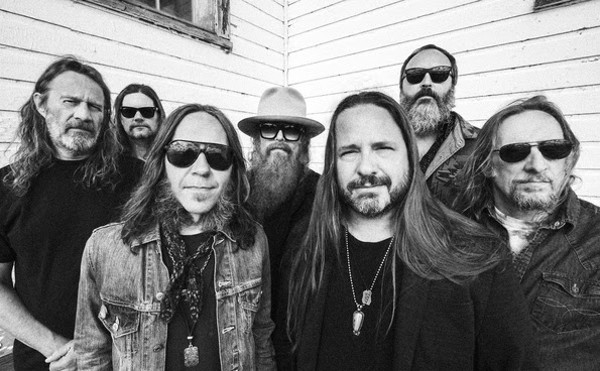A few weeks before the Ingenuity Festival, Cuyahoga Arts and Culture released its first report to the public during a meeting at Severance Hall. Under the title "Sound Investment, Solid Impact," it tells of the services provided by arts groups in the county, thanks in part to support from CAC, plus a financial statement. The presentation had a liturgical feel as speakers — CAC board president Steve Minter, former Musical Arts Association president Dick Bogomolny — recited the history and names of early proponents of public arts funding.
CAC certainly deserves that kind of appreciative review. With the passage of the cigarette tax, Cleveland went from being dead last in public support of the arts among major cities to ranking among the top five communities in the nation. As a result, it may seem that arts coffers should be flush now, but as Minter noted, "Just as the cigarette tax seemed to promise some fiscal breathing room, along came the nation's fiscal meltdown. Imagine where we'd be now if we didn't have Cuyahoga Arts and Culture to help these organizations manage in tough times. Thank God that we were able to accomplish this when we did."
The noteworthy moment came when Minter observed that there is a sunset provision on the cigarette tax: The county stops collecting it in 2017 unless the voters approve its renewal. It seems like a long way off, but not if your financial plan relies on a voter-approved stream of public money. CAC's community report could be considered the first piece in the campaign, aiming not just to communicate financial data, but to convince voters that their dollars represent "sound investment and solid impact."
There's nothing AS thoroughly held up for this kind of scrutiny than the Ingenuity Festival. The arts and technology celebration is examined annually for its attendance, finances and economic impact. Few other arts organizations conduct such annual studies not just of their own books, but of how much money is spent in the community as result of their efforts.
That's especially odd considering the relative size of Ingenuity's budget — $780,000 in 2008, $550,000 this year. That's miniscule compared to the budgets of other institutions that brand the city. The Cleveland Orchestra's accumulated deficit this year has been projected to be more than a dozen times Ingenuity's total budget.
Both bills and revenue are still coming in for 2009. Festival director James Levin says PlayhouseSquare's ticketing services estimates a crowd of 30,000-35,000. He's not certain whether or not the event will make money, but he thinks that it will be "very close" to a break-even year.
This year's economic impact study is not yet complete. Last year's study, by Team NEO using data collected by Cypress Research, said Ingenuity's $780,000 budget generated $2.3 million in economic activity.
Incidentally, Levin says he does expect the festival to return next year, though as he regroups from this year's event, he's looking ahead to a separate though similar event September on 25-26, on the subway level of the Detroit-Superior Bridge.
Ingenuity gets scrutinized because it was born of the same dialogue that brought public investment to the arts. We have Richard Florida to thank for lumping arts and technology together, but he's not the first to argue that a strong arts sector — which we certainly have — can lure people to cities to spend money. It sounds like a religious creed: We believe that our orchestra, art museum, historic theaters and individual artists are a net gain. Therefore we invest public money to help artists and their organizations survive and thrive.
Ingenuity has evolved from booking big-name attractions and emphasizing high-tech, high-concept productions to a lower-cost local brand of ingenuity, so it's inevitable that participants and guests ask questions about money and what defines success.
Many artists, especially those who made complicated proposals or had travel and other expenses associated, got paid. If we're spending local public money to show off Cleveland's strong arts sector, should the money be spent on local artists?
Or does the festival need to book artists and performers with name recognition to draw crowds?
And if showing off local artists is a good idea, and we still need name recognition to draw visitors from afar, what about the biggest names in town? An Ingenuity festival beginning with Parade the Circle and concluding with a free Cleveland Orchestra concert on Public Square would have drawing power outside the region and still be homegrown. Is that too much to ask?
Those organizations would be taking a risk by allying with what still must be considered an upstart festival. The public has put the faith of public money on the line, and without these large organizations working together, we're not getting the most out of these assets.











